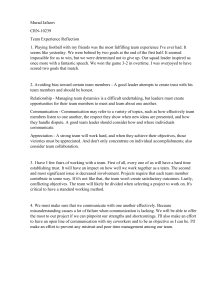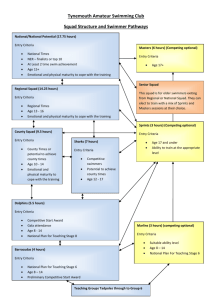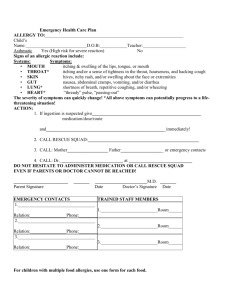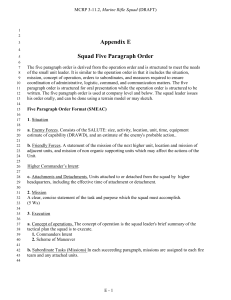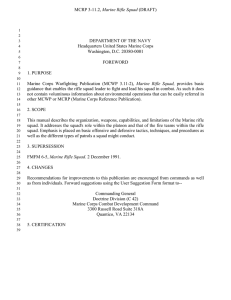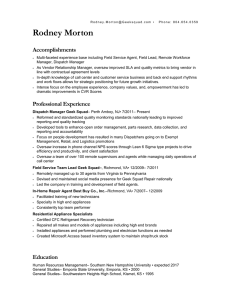File - Hannah Anthes
advertisement
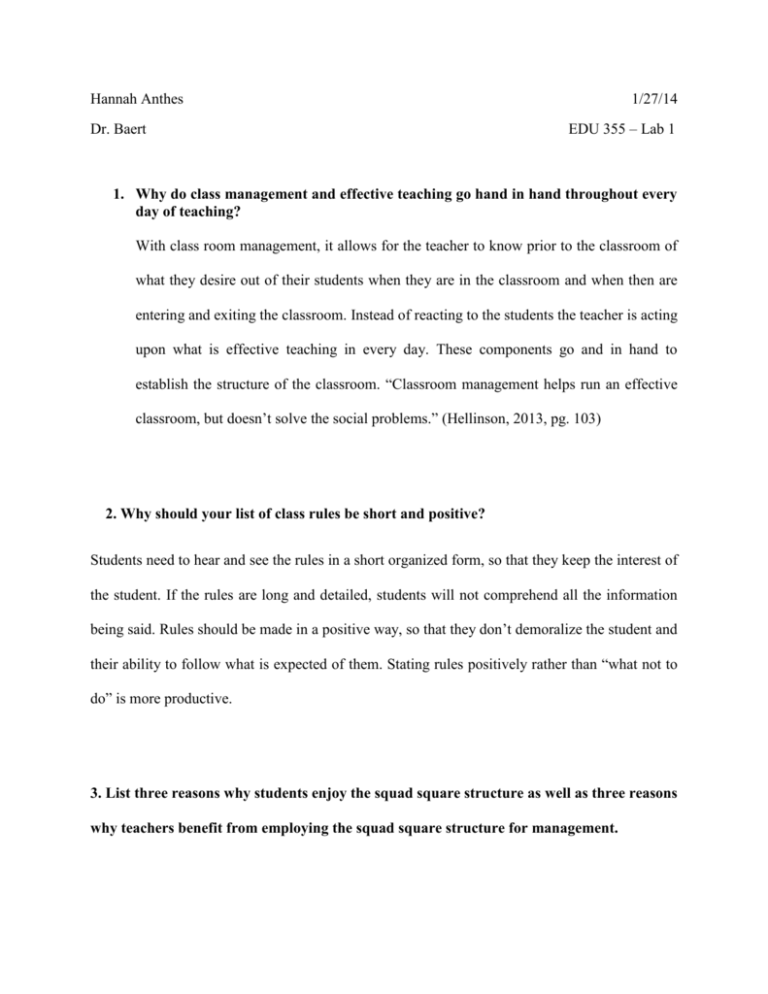
Hannah Anthes Dr. Baert 1/27/14 EDU 355 – Lab 1 1. Why do class management and effective teaching go hand in hand throughout every day of teaching? With class room management, it allows for the teacher to know prior to the classroom of what they desire out of their students when they are in the classroom and when then are entering and exiting the classroom. Instead of reacting to the students the teacher is acting upon what is effective teaching in every day. These components go and in hand to establish the structure of the classroom. “Classroom management helps run an effective classroom, but doesn’t solve the social problems.” (Hellinson, 2013, pg. 103) 2. Why should your list of class rules be short and positive? Students need to hear and see the rules in a short organized form, so that they keep the interest of the student. If the rules are long and detailed, students will not comprehend all the information being said. Rules should be made in a positive way, so that they don’t demoralize the student and their ability to follow what is expected of them. Stating rules positively rather than “what not to do” is more productive. 3. List three reasons why students enjoy the squad square structure as well as three reasons why teachers benefit from employing the squad square structure for management. Three reasons why students enjoy the squad square, is due to the mystery of never knowing who is in their group. Students get to be creative and come up with a name that represents them as group. Lastly students can have contests with their teacher in activities. The group activity is no longer about the students competing with each other, but either against them self or against the teacher. Teachers benefit from employing the squad square structure as well. Teachers can have a visual of where their students are at all time. This formation allows for directions to be given clearly. Secondly, teachers have groups or teams easily made and can help with a quick transition, and no one is being selected for a team. Lastly teachers benefit from squad structure, because they can see how others interact with different people at different times. While in the formation of a squad structure, adjustments can easily be made if the groups are not equal due to gender, or skill ability. 4. What common elements do all of the activities in this management lab share? The common elements that all these activities in the management lab share are for students to respond with the right protocol to when the teacher gives directions. This could be described as response latency. Another element is withitness. Teachers have to participate just as much as the students do. Students read body language very well, the more the teacher encourages the student to be active, the student can react in a positive way. The best example I have of this is the “bear hunt” at first, we were all a little confused and couldn’t even sing the words to the song. About half way through, we were able to get into the activity and sing along, this was due to our teacher and her energetic voice and actions that got us into the activity. Other common elements were a safe environment. In our class we used the term “personal bubble” if people got too close the bubble would pop. In many activities I could see a signal of attention being used. Whenever we transitioned to another activity we would see the signal and know to listen up. These were some of the common elements used in our lab. 5. How is the affective domain addressed in this lesson? How is the psychomotor domain addressed in this lesson? How is the cognitive domain addressed in this lesson? In this lesson the affective domain was addressed by, allowing students to choose their self-space and how close or not close they wanted to be near people. By giving students that choice, it created an emotionally safe environment and it reassured that the student was safe. In the psychomotor domain students were constantly on the move. In many of the activities that we did, body control was emphasized. Whether the students were trying to avoid a run down by bending their knees or balancing a bean bag on their head, students were participating in movements that needed control to be completed. In the cognitive domain, students were to learn signals for attention and then responding. In our lesson we had to listen for when the music stopped and put our hands on our knees, and wait for the next set of directions. In a different activity, we had to touch a bean bag as many times as we could in thirty seconds. In our head we had to know our score and try to beat it the next time. This activity was based off of goal setting and knowing how to do that. 6. Can you think of an introductory activity you have experienced that you can use with elementary age children during the first week? In elementary school, one of the introductory activities that I have experienced that I can use during the first week of school is giving proper instruction for how equipment should be used, and how to put it away. I remember on the first day of physical education class, our teacher would lay out equipment and show us how to use it. For example, we had scooters that we could ride around on the gym floor. My teacher would demonstrate the proper way to ride on the scooter and how to be aware of others. After she demonstrated she let us try it. To make it even more exciting, she would play our favorite songs on the stereo that she had in the gymnasium. When it was time to clean up, she showed us how to neatly put away the scooters and line up. I really liked this introductory activity because; it was about getting the students interested and trying new things. That is what the first day of class was about. Each student was able to try the scooter and all the other equipment. In the future when our class had a “free day” (pick an activity that you liked and play with others) we already knew what we liked and didn’t like .At the end of class we knew the correct protocol for how to put it away. The first day of class, made the rest of the year run very smoothly.
